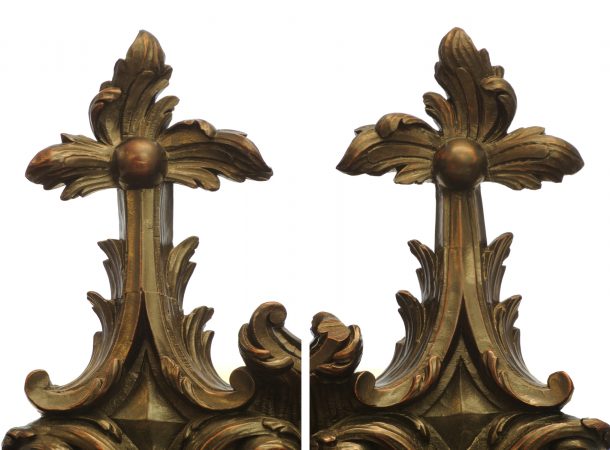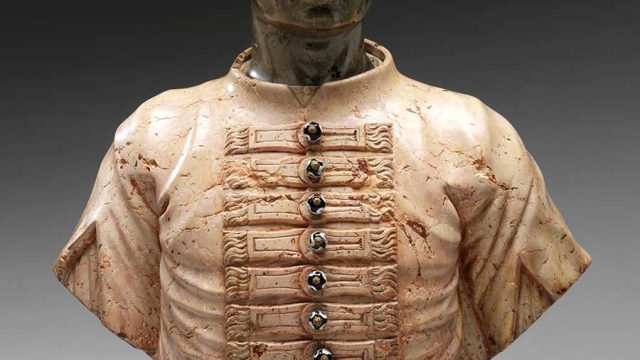by Clunie Fretton, Ornamental & Historic Woodcarver
The restoration of the Master’s Chair of the Joiners & Ceilers Company posed an exciting challenge (Figure 1). The chair, on long-term loan to the Victoria and Albert Museum, was made in 1754 by Edward Newman, a Past Master and talented cabinetmaker and carver, and gifted to the Company. It possesses carving and design of a distinctive flair and aptitude, and marries very elegantly the two concerns of the Joiners & Ceilers, who as a livery are responsible for both joinery and carving, the latter at times conflated with panellers under the archaic word “ceiler”. The chair, constructed from mahogany, has survived in remarkably good condition with very few significant losses from the ornately carved and pierced back despite its use. However, the apex of the chair back had more substantial losses, most notably the loss of a whole finial on the righthand side of the chair and a number of heraldic elements from the coat of arms figured in full relief in the middle.
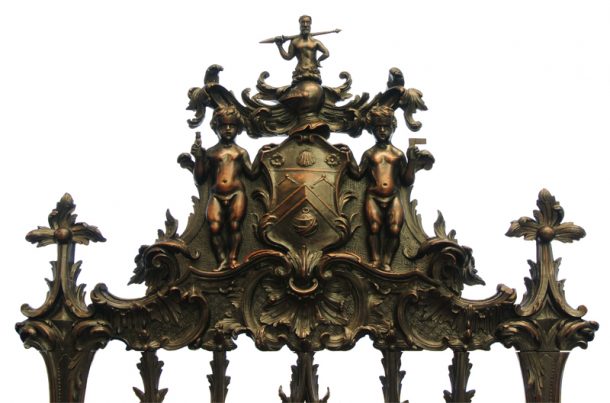
It was particularly important to reduce the ambiguity of any replacements; a feat more easily achieved in the restoration of the missing leaf tips owing both to the predictability of acanthus as an ornamentation and also to the surplus of reference material in the carved chair back itself. The task was made easier by the hints left in the manner the carving had been undercut, as the decisions of the original carver left clues as to how the missing carving would have continued up from the breaks, so one could follow the curves to their conclusions. The missing finial could be copied directly from its mirror on the opposite side of the chair, barring a missing leaf tip at the top.
The replacement of the heraldic elements posed a greater challenge as there was the greatest lack of reference material. The content of the missing heraldry is defined very clearly in the blazon (a written description of the coat of arms that leaves no uncertainty as to the devices that are featured) but the execution of the missing elements was more problematic. However, research yielded a copy of Edward Hatton’s “New View of London”, published in 1708, which included descriptions of the Halls and Arms of every Livery Company and, most fortuitously, engravings of many of their coats of arms. Though published just under fifty years before the chair was made, this was the closest reference image that could be obtained of the coat of arms at that time, and the most contemporary blazon:
“Crest is a Demy-Savage proper holding a Spear Or. Supporters 2 Cupids of the last, the dexter holding a Woman crowned with a Castle, the sinister a Square.”
This thankfully cleared the muddied record of what the dexter supporter was holding, which had in some references been more akin to a figure of Christ, and clarified her as wearing a mural coronet. The crest, a “Savage”, was shown in the reference image holding a tilting spear.
There were in total eleven missing pieces, comprising the arms from the supporters, an arm and head from the crest, the finial, and numerous leaf tips. Work began by modelling in a hard modelling wax, in order to create a removable reference for the new pieces being made and to fine-tune how best the new pieces ought to sit in relation to the old losses. Small blanks were then cut from Honduran mahogany, with the grain of the wood running in the same direction as on the original.
Carving began on elements attached to a piece of board with a hide-glue paper joint. This allowed the carving to be held in place and the majority of the waste material removed, while referencing the wax models prior to them being detached from the back board. With some excess material left, the carvings were then offered up to their positions, and the lengthy process of carving away their points of contact to match the often jagged and uneven breaks began. It was particularly important at this stage to have excess material left to allow the matching of contact points to be made exact before the rest of the carving was completed, so that on pieces such as the sinister supporter’s arm, the square would sit vertically and at the correct angle. At this stage the small size and awkward shape of the carving meant that it could no longer be fixed or clamped but held in one hand and carved with the other.
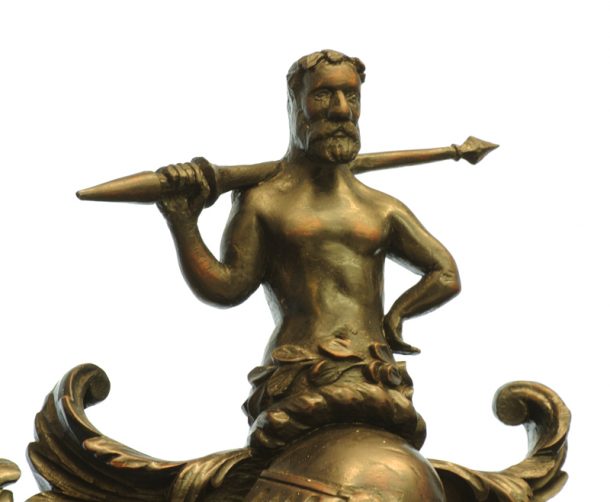
The carving of the head (Figure 2) proved the greatest challenge due to the paucity of contemporary references. Inspiration was taken from the two supporters, which though carved with great facility also retained something of the uncanny in the proportions and shape of their faces. The broad foreheads and closely clustered features are typical of infants, but some of their unusual look was transposed into the head of the savage to create continuity with the existing carving style. The replacements were glued in place with hide glue bulked with coconut shell powder and microballoons. The clamping of the small and irregularly-sized pieces was tricky, and the best solution proved to be using Kemco Impression Compound pressed onto the new carvings in order to create a platform for the spring clamps (Figure 3).
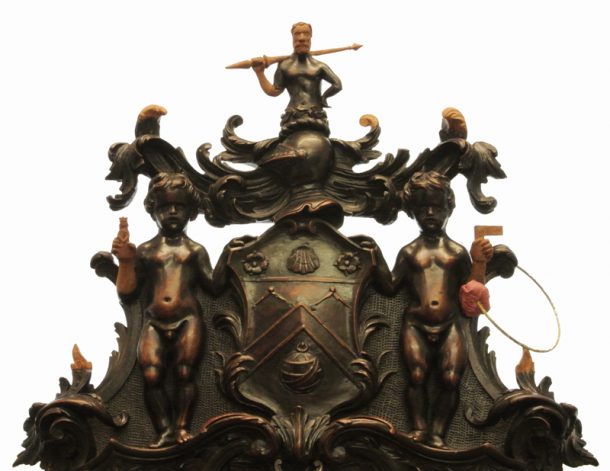
The chair had been French polished over the old breaks so the polish was removed as it would interfere with the adhesion of the glue. The carvings were then colour-matched to the original using garnet shellac, a close colour match, adjusted with a minute quantity of lamp black pigment. The carved additions were then rubbed back to be consistent with the wear on the original, and a small quantity of hard black wax was applied to smooth the joins where extensive wear of the breaks had rounded their edges (Figure 4). Renaissance Wax was then applied to dull the sheen in areas inaccessible to sanding.
Acknowledgements
I am grateful to the Worshipful Company of Joiners & Ceilers, curators Leela Meinertas and Nick Humphrey, and all the members of Furniture Conservation for their support during this project.
